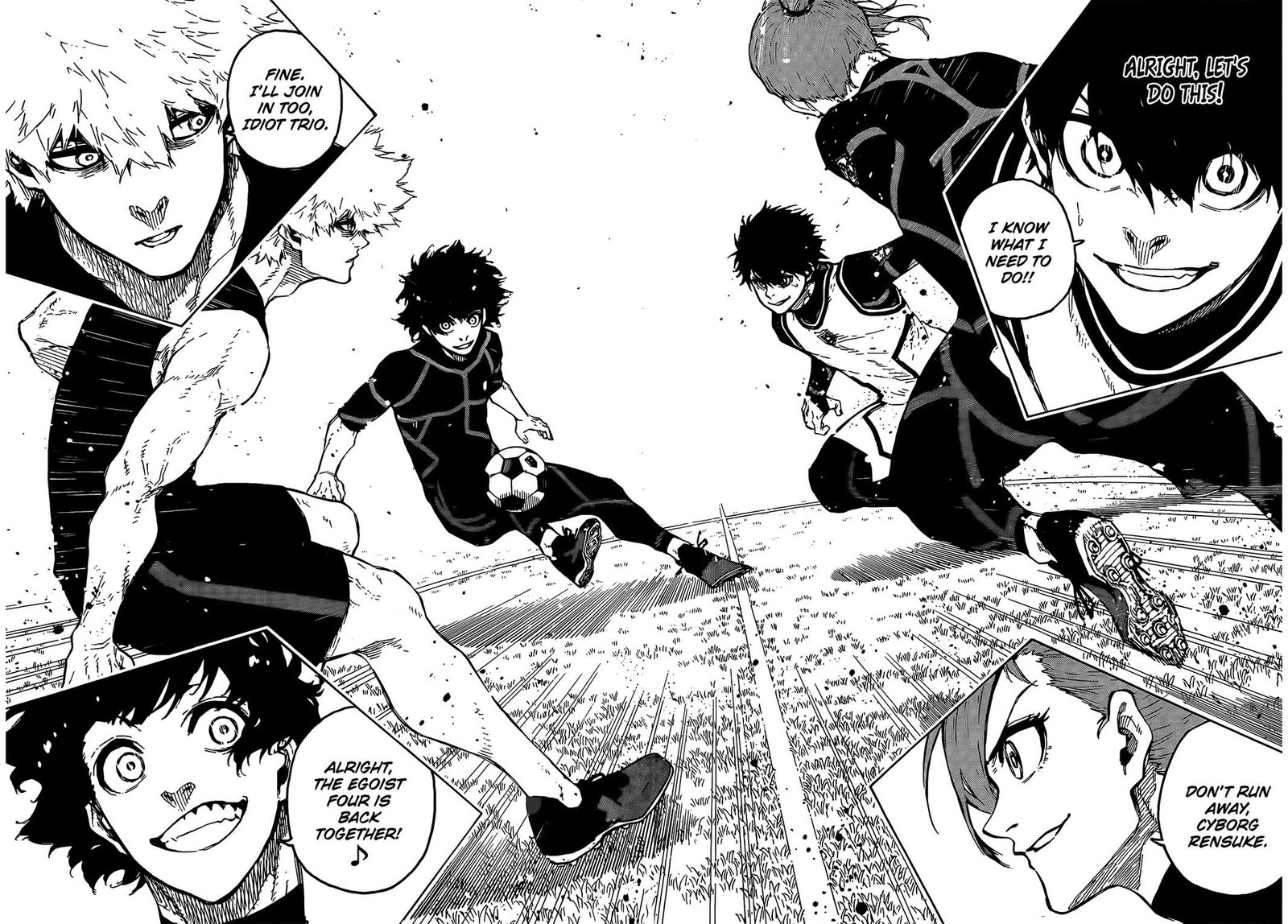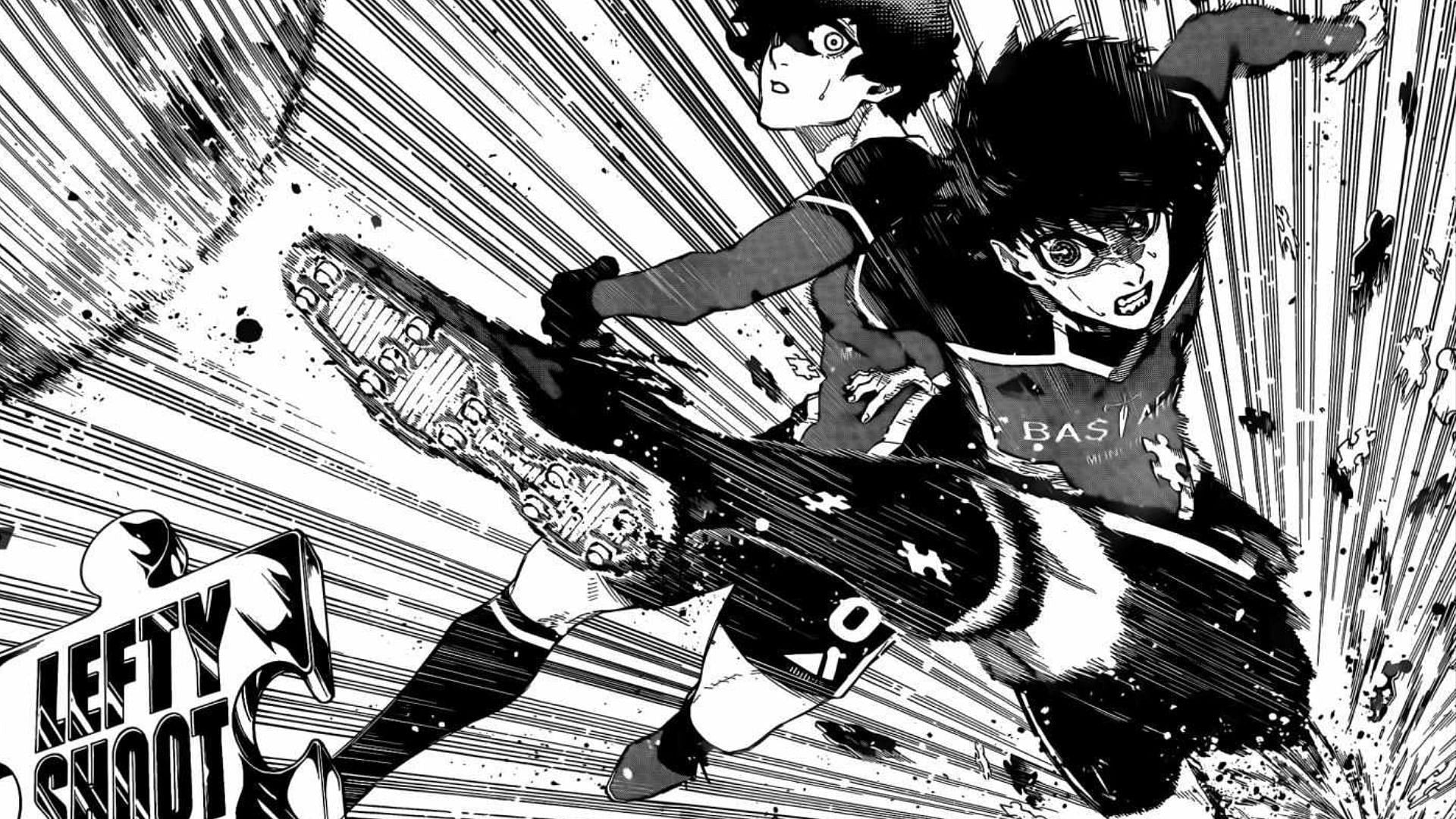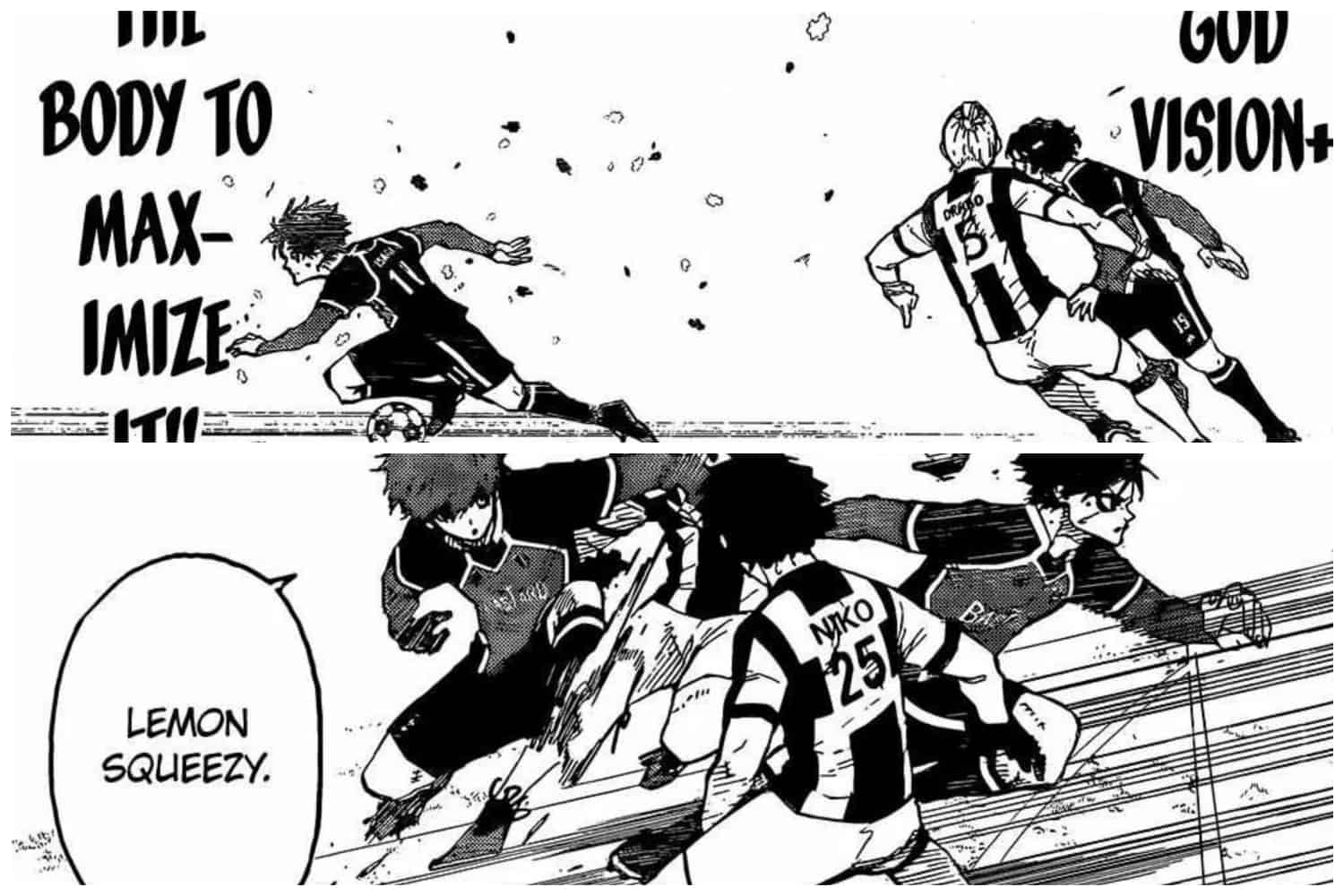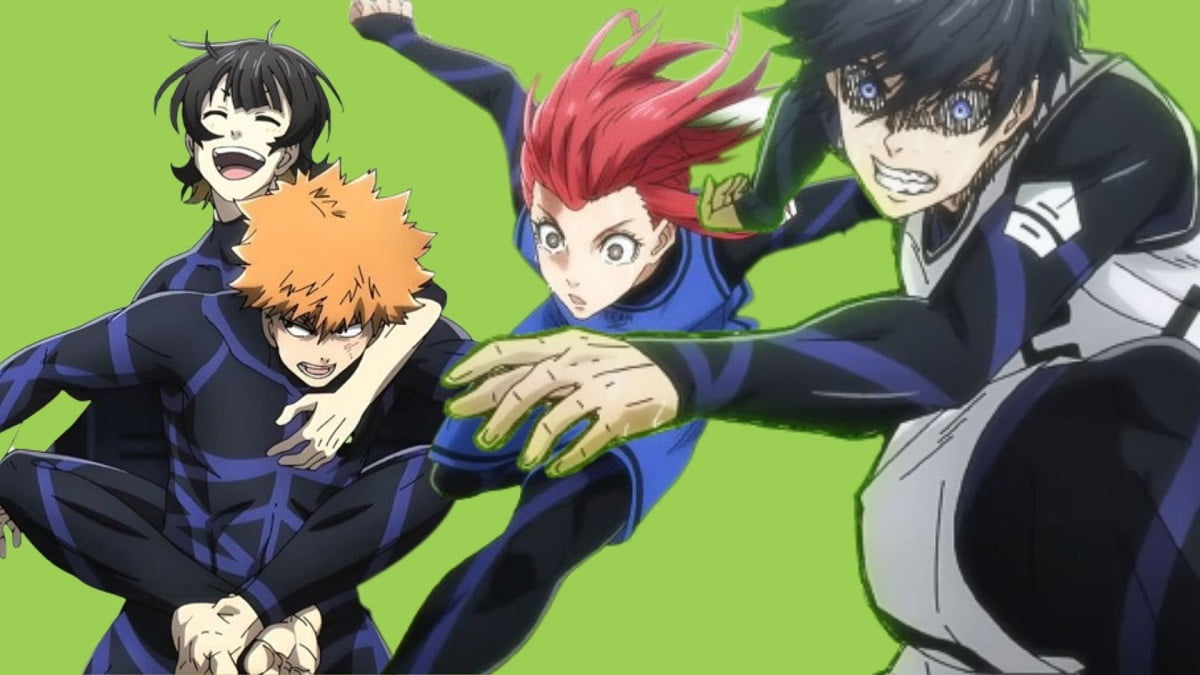Welcome to Blue Lock Chapter 213, where the battle for soccer supremacy intensifies! Join us as we delve into the heart of this captivating chapter, where strategic brilliance and raw emotions collide.
As the teams face off in a high-stakes match, we’ll witness the cunning strategies, personal conflicts, and stunning visuals that make Blue Lock a standout in the world of sports manga.
Chapter Overview

Chapter 213 of Blue Lock is titled “Blue Lock Man #10.” The chapter focuses on the aftermath of the Second Selection and the announcement of the Blue Lock Man #10, who will join the Blue Lock Eleven.
The chapter begins with a flashback to the end of the Second Selection, where Isagi Yoichi is declared the winner. In the present, Isagi is practicing with the Blue Lock Eleven when he is approached by Jinpachi Ego, the creator of Blue Lock. Ego informs Isagi that he has been chosen as the Blue Lock Man #10, much to Isagi’s surprise.
Isagi is initially hesitant to accept the position, but Ego convinces him that he has the potential to become the best striker in the world. Isagi agrees to join the Blue Lock Eleven, and the chapter ends with the team preparing for their next match.
Key Characters
- Isagi Yoichi: The protagonist of Blue Lock and the newly appointed Blue Lock Man #10.
- Jinpachi Ego: The creator of Blue Lock and the coach of the Blue Lock Eleven.
- The Blue Lock Eleven: The team of 11 players who will represent Japan in the World Cup.
Significance, Blue lock chapter 213
Chapter 213 is a significant chapter in the Blue Lock storyline, as it marks the beginning of a new arc in the story. With Isagi now a member of the Blue Lock Eleven, the team is finally complete and ready to face the challenges that lie ahead.
Character Analysis

In Chapter 213, the characters continue to develop and evolve as they face new challenges and confront their inner demons. Their interactions and conflicts shape the narrative, driving the plot forward and revealing the complexities of their personalities.
Isagi Yoichi
Isagi’s unwavering determination and adaptability continue to be his defining traits. In this chapter, he faces off against Barou, a formidable opponent who challenges his beliefs and forces him to confront his own weaknesses. Through this encounter, Isagi realizes the importance of embracing his individuality and finding his own path to success.
Barou Shoei
Barou, once arrogant and dismissive, undergoes a subtle transformation in this chapter. As he faces Isagi, he begins to question his own assumptions and confront the limitations of his playstyle. This encounter sets the stage for Barou’s potential growth and redemption.
Kunigami Rensuke
Kunigami’s unwavering belief in his own abilities is put to the test in this chapter as he faces off against Chris Prince, a skilled defender. Kunigami’s determination to prove himself leads him to make reckless decisions, but he ultimately learns the value of patience and teamwork.
Bachira Meguru
Bachira’s free-spirited nature and unpredictable playstyle continue to be a source of both strength and weakness. In this chapter, he faces off against Yukimiya Kenyu, a calculating and analytical opponent. Bachira’s ability to adapt and find creative solutions proves invaluable, but he also learns the importance of discipline and strategy.
Tactical Strategies

Chapter 213 of Blue Lock showcased a clash of strategic minds, as both Team White and Team Red employed unique tactics to gain an advantage. Let’s delve into the strategies used and their impact on the match.
Team White’s Strategy: Zone Defense
Team White, led by Barou, opted for a defensive strategy centered around zone defense. They formed a compact formation, with each player assigned to mark a specific area of the pitch. This approach aimed to limit Team Red’s space and prevent them from creating clear-cut chances.
Strengths:
- Effective in controlling the tempo of the game
- Minimized Team Red’s attacking options
Weaknesses:
- Susceptible to individual brilliance or quick counterattacks
- Required high levels of concentration and communication
Team Red’s Strategy: High Press and Quick Transitions
In contrast to Team White’s defensive approach, Team Red, led by Kunigami, adopted a high-pressure strategy. They pressed Team White aggressively, forcing them to make mistakes and win back possession high up the pitch. Once they gained the ball, they looked to transition quickly into attack, using their speed and technical ability to create chances.
Strengths:
- Disrupted Team White’s build-up play
- Created opportunities for counterattacks
Weaknesses:
- Required a high level of fitness and energy
- Left gaps in their defense if they lost possession
Impact on the Match
The tactical strategies employed by both teams had a significant impact on the outcome of the match. Team White’s zone defense proved effective in frustrating Team Red’s attack, but it also left them vulnerable to counterattacks. Team Red’s high-pressure approach forced Team White into errors and created chances, but it also exposed their defense when they lost the ball.
Ultimately, Team White’s ability to maintain their defensive shape and capitalize on Team Red’s mistakes proved to be the deciding factor, as they emerged victorious with a 2-1 scoreline.
Artistic Elements

Chapter 213 of Blue Lock showcases a captivating visual style that complements its intense storytelling. The chapter utilizes a variety of panels, angles, and character designs to convey emotions and action effectively.
Panel Layout
The chapter employs dynamic panel layouts to create a sense of rhythm and flow. Wide panels depict expansive action sequences, while smaller panels zoom in on crucial moments and character expressions. This interplay creates a balance between the overall scope of the match and the intimate details of individual players.
Angles and Perspectives
The use of angles and perspectives adds depth and drama to the chapter. Low angles make players appear larger and more imposing, while high angles convey a sense of vulnerability. Off-center panels create a sense of unease and uncertainty, reflecting the unpredictable nature of the match.
Character Design
The character designs in Chapter 213 are expressive and distinct. Each player has unique facial features and body language that reflect their personalities and playing styles. The mangaka pays close attention to detail, capturing the subtle nuances of their expressions and movements. This level of detail helps to establish a strong connection between the readers and the characters.
Overall, the artistic elements in Chapter 213 of Blue Lock work together seamlessly to create a visually engaging and emotionally impactful reading experience. The dynamic panel layout, strategic use of angles and perspectives, and expressive character designs contribute to the chapter’s overall impact and enhance the storytelling experience.
Final Wrap-Up

Blue Lock Chapter 213 leaves us on the edge of our seats, eager to see what unfolds next in this thrilling soccer saga. The characters’ determination, the tactical battles, and the stunning artwork have combined to create an unforgettable reading experience.
As we eagerly await the next chapter, let’s reflect on the lessons learned, the strategies employed, and the emotional rollercoaster we’ve been taken on.
Clarifying Questions: Blue Lock Chapter 213
What is the significance of Blue Lock Chapter 213?
Chapter 213 is a pivotal moment in the Blue Lock storyline, as it showcases the growth of the characters, the intensity of the competition, and the tactical brilliance of the teams.
Who are the key characters involved in this chapter?
The chapter focuses on the interactions between Isagi Yoichi, Bachira Meguru, and Rin Itoshi, as they navigate the challenges of the Blue Lock program.
What are the main tactical strategies employed in the match?
The teams utilize various strategies, including zonal marking, counter-attacks, and man-to-man defense, to gain an advantage on the field.